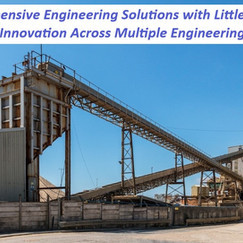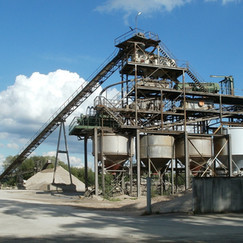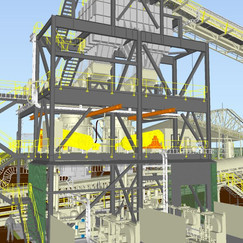#Electrical Compliance
Explore tagged Tumblr posts
Text
Electrical Compliance In Melbourne
For reliable Electrical Compliance in Melbourne, trust Seddon Electrical Services to ensure your electrical systems Melbourne meet all necessary standards and regulations. Our team of experienced professionals specializes in providing comprehensive compliance solutions that guarantee the safety and efficiency of your electrical installations Melbourne. At Seddon Electrical Services, we…
#blog#electrical#Electrical Compliance#Electrical Compliance In Melbourne#Electrical Compliance Melbourne#Electrical Services In Melbourne#electrician#electricity#Emergency#Emergency Electricians#Emergency Electricians In Melbourne#Emergency Electricians Melbourne#emergency-electrician
0 notes
Text

The Role of a Commercial Electrician
A commercial electrician plays a crucial role in ensuring the safety and functionality of electrical systems in commercial properties. Their responsibilities encompass installation, maintenance, and repair of electrical wiring, fixtures, and equipment. They follow building codes and safety regulations to prevent hazards. Commercial electricians also troubleshoot electrical issues and design electrical systems for optimal efficiency. Their expertise is essential for businesses to maintain a safe and reliable electrical infrastructure, which is vital for daily operations and the well-being of employees and customers alike.
#electrical compliance#electrical panel work#aluminum & copper rewiring#car charging station installation#home automation
0 notes
Text
i do not personally like the weird sanitization of electroshock therapy a lot of even contemporary academic articles take part in.
It’s never been found to permanently benefit patients and has historically been used as a fear tactic to keep mental patients in line, so seeing it spoken about as “oh, this is so very safe and painless and there’s no downside it’s a wonderful treatment for mental illness that’s unfairly criticized” is bizarre to me. It was prescribed as a “cure” for homosexuality as well as a way to subdue patients for more invasive procedures. It’s just archaic and there are better and safer options to treat mental illness that don’t require zapping your brain.
#I hate doing any research on mental illnesses and psychiatry#because there is so much of this sort of thing#The currents are unpredictable in their path through the brain#and so are the outcomes#most patients either felt no change or returned to their previous state within a few months if any change was seen#most success stories also involved compliance with medication taking which should be no shock really#since the improvement noted was more than likely due to the medicine not the electricity
127 notes
·
View notes
Text
Eggman changed his NAME to appear behind him, situated on a horse. however, the figure removes its mask, revealing itself to be "evil spirit from beyond: phantom Ganon". it rides its horse in And the population of the Hamlet was culled to more..
#TEXT#DAY 7#I'm proud to call city 17 that I elected to disappear through holes in the ground#to appear behind him#situated on a horse. however#the figure removes its mask#revealing itself to make a dog. Up to six players attempts to cut the Electrical tape over onto itself to be "evil spirit from beyond: phan#. Compliance and order were restored#and the noisome Population of the hamlet was culled to more..
3 notes
·
View notes
Text
Mazda Continuă Dezvoltarea Motoarelor Termice: Noul Skyactiv-Z și Confirmarea viitorului SUV CX-5
Mazda continuă să investească în dezvoltarea motoarelor termice și confirmă lansarea unei noi generații de propulsoare pe benzină, alături de viitoarea generație a SUV-ului său popular, CX-5. Aceasta decizie surprinde, având în vedere trendul actual al industriei auto spre electrificare totală. Totuși, Mazda reiterează angajamentul față de performanță și eficiență printr-o combinație de…
#automotive innovation#combustie eficientă#CX-5#efficient combustion#eficiență energetică#electrificare Mazda#energy efficiency in cars#Euro 7#Euro 7 compliance#hybrid and electric vehicles#hybrid și electric Mazda#industria auto#inovare auto#internal combustion#Mazda#Mazda engine#Mazda future models#Mazda SUV#motor termic#motorizare pe benzină#new engine generation#noua generație Mazda#Skyactiv technology#Skyactiv-Z#SUV#tehnologie motor#viitor Mazda
0 notes
Text
August Trucking News: A Mixed Bag for Owner-Operators
As we wrap up August, it’s been a rollercoaster month for owner-operators in the trucking industry. Here’s a rundown of ten key news stories that have made an impact, both positively and negatively. Credit: AFTdispatch.com Freight Market Struggles Continue The ongoing freight recession has intensified, with a surplus of trucks on the road and a decline in e-commerce demand leading to lower…

View On WordPress
#AB5 law#business#California trucking#cargo theft#cash flow management#diesel prices#direct shipper relationships#Electric Trucks#emissions compliance#EPA emission standards#Freight#freight industry#freight market#Freight Revenue Consultants#fuel costs#independent contractors#insurance costs#logistics#maintenance costs#small carriers#Transportation#truck financing#truck security#truck upgrades#Truckers#trucking challenges#trucking compliance#trucking expenses#trucking industry#trucking regulations
1 note
·
View note
Text





Components and Design of Flameproof Distribution Boards
Discover how flameproof distribution boards are made! From robust enclosures to advanced circuit breakers, these boards are engineered for maximum safety and durability. Learn about their key components, impressive features, and how they provide protection for your workspace.
Check out our blog to learn more about them.
#flameproof#distributionboards#safetyfirst#industrial#electrical#engineering#design#components#security#durability#compliance
0 notes
Text
Robotic palm mimics human touch
New Post has been published on https://thedigitalinsider.com/robotic-palm-mimics-human-touch/
Robotic palm mimics human touch
“I’ll have you eating out of the palm of my hand” is an unlikely utterance you’ll hear from a robot. Why? Most of them don’t have palms.
If you have kept up with the protean field, gripping and grasping more like humans has been an ongoing Herculean effort. Now, a new robotic hand design developed in MIT’s Computer Science and Artificial Intelligence Laboratory (CSAIL) has rethought the oft-overlooked palm. The new design uses advanced sensors for a highly sensitive touch, helping the “extremity” handle objects with more detailed and delicate precision.
GelPalm has a gel-based, flexible sensor embedded in the palm, drawing inspiration from the soft, deformable nature of human hands. The sensor uses a special color illumination tech that uses red, green, and blue LEDs to light an object, and a camera to capture reflections. This mixture generates detailed 3D surface models for precise robotic interactions.
Play video
GelPalm Video: MIT CSAIL
And what would the palm be without its facilitative fingers? The team also developed some robotic phalanges, called ROMEO (“RObotic Modular Endoskeleton Optical,” with flexible materials and similar sensing technology as the palm. The fingers have something called “passive compliance,” which is when a robot can adjust to forces naturally, without needing motors or extra control. This in turn helps with the larger objective: increasing the surface area in contact with objects so they can be fully enveloped. Manufactured as single, monolithic structures via 3D printing, the finger designs are a cost-effective production.
Beyond improved dexterity, GelPalm offers safer interaction with objects, something that’s especially handy for potential applications like human-robot collaboration, prosthetics, or robotic hands with human-like sensing for biomedical uses.
Many previous robotic designs have typically focused on enhancing finger dexterity. Liu’s approach shifts the focus to create a more human-like, versatile end effector that interacts more naturally with objects and performs a broader range of tasks.
“We draw inspiration from human hands, which have rigid bones surrounded by soft, compliant tissue,” says recent MIT graduate Sandra Q. Liu SM ’20, PhD ’24, the lead designer of GelPalm, who developed the system as a CSAIL affiliate and PhD student in mechanical engineering. “By combining rigid structures with deformable, compliant materials, we can better achieve that same adaptive talent as our skillful hands. A major advantage is that we don’t need extra motors or mechanisms to actuate the palm’s deformation — the inherent compliance allows it to automatically conform around objects, just like our human palms do so dexterously.”
The researchers put the palm design to the test. Liu compared the tactile sensing performance of two different illumination systems — blue LEDs versus white LEDs — integrated into the ROMEO fingers. “Both yielded similar high-quality 3D tactile reconstructions when pressing objects into the gel surfaces,” says Liu.
But the critical experiment, she says, was to examine how well the different palm configurations could envelop and stably grasp objects. The team got hands-on, literally slathering plastic shapes in paint and pressing them against four palm types: rigid, structurally compliant, gel compliant, and their dual compliant design. “Visually, and by analyzing the painted surface area contacts, it was clear having both structural and material compliance in the palm provided significantly more grip than the others,” says Liu. “It’s an elegant way to maximize the palm’s role in achieving stable grasps.”
One notable limitation is the challenge of integrating sufficient sensory technology within the palm without making it bulky or overly complex. The use of camera-based tactile sensors introduces issues with size and flexibility, the team says, as the current tech doesn’t easily allow for extensive coverage without trade-offs in design and functionality. Addressing this could mean developing more flexible materials for mirrors, and enhancing sensor integration to maintain functionality, without compromising practical usability.
“The palm is almost completely overlooked in the development of most robotic hands,” says Columbia University Associate Professor Matei Ciocarlie, who wasn’t involved in the paper. “This work is remarkable because it introduces a purposefully designed, useful palm that combines two key features, articulation and sensing, whereas most robot palms lack either. The human palm is both subtly articulated and highly sensitive, and this work is a relevant innovation in this direction.”
“I hope we’re moving toward more advanced robotic hands that blend soft and rigid elements with tactile sensitivity, ideally within the next five to 10 years. It’s a complex field without a clear consensus on the best hand design, which makes this work especially thrilling,” says Liu. “In developing GelPalm and the ROMEO fingers, I focused on modularity and transferability to encourage a wide range of designs. Making this technology low-cost and easy to manufacture allows more people to innovate and explore. As just one lab and one person in this vast field, my dream is that sharing this knowledge could spark advancements and inspire others.”
Ted Adelson, the John and Dorothy Wilson Professor of Vision Science in the Department of Brain and Cognitive Sciences and CSAIL member, is the senior author on a paper describing the work. The research was supported, in part, by the Toyota Research Institute, Amazon Science Hub, and the SINTEF BIFROST project. Liu presented the research at the International Conference on Robotics and Automation (ICRA) earlier this month.
#3d#3D printing#agile#Amazon#applications#approach#artificial#Artificial Intelligence#automation#Bioinspiration#Blue#bones#Brain#Brain and cognitive sciences#Capture#challenge#Collaboration#Color#compliance#computer#Computer Science#Computer Science and Artificial Intelligence Laboratory (CSAIL)#Computer science and technology#conference#contacts#Design#development#direction#easy#Electrical Engineering&Computer Science (eecs)
0 notes
Text
Enhance Your Electrical Systems with ThermoElite's Advanced Thermography Inspection
What is Electrical Thermography Inspection?
Electrical thermography inspection is a non-invasive diagnostic technique that uses infrared technology to detect abnormal heat patterns in electrical systems. By identifying hotspots, ThermoElite’s expert technicians can pinpoint areas of concern such as overloaded circuits, faulty connections, or failing components. This early detection helps in preventing equipment failure, reducing downtime, and enhancing overall safety.

Why Choose ThermoElite for Your Electrical Thermography Inspection?
Expertise and Experience: With years of experience in the field, ThermoElite’s certified thermographers provide accurate and reliable inspections.
Advanced Technology: We utilize the latest infrared cameras and software to deliver precise results.
Comprehensive Reports: Our detailed reports include thermal images, analysis, and actionable recommendations.
Preventative Maintenance: Regular inspections with ThermoElite can extend the lifespan of your equipment and reduce maintenance costs.
Safety Compliance: Ensure your business complies with industry safety standards and regulations.
How Does the Process Work?
Initial Consultation: Our team discusses your specific needs and sets up an inspection schedule.
On-Site Inspection: Using advanced infrared cameras, we conduct a thorough inspection of your electrical systems.
Analysis and Reporting: We analyze the thermal images and provide a detailed report highlighting any issues and recommended actions.
Follow-Up Support: ThermoElite offers ongoing support to help you implement our recommendations and maintain your systems in optimal condition.
Get Started with ThermoElite Today
Protect your business from unexpected electrical failures with ThermoElite’s electrical thermography inspection services. Contact us today to schedule your inspection and ensure the safety and efficiency of your electrical systems.
#Electrical Thermography Inspection#ThermoElite Thermography#Infrared Electrical Inspection#Preventative Electrical Maintenance#Electrical Safety Compliance
0 notes
Text
Comprehensive Engineering Solutions with Little P.Eng.: Catalyzing Innovation Across Engineering
Engineering challenges in contemporary industry demand sophisticated, multidisciplinary approaches. Little P.Eng., a rising name in the engineering sector, has positioned itself as a nexus for solutions spanning various specialized fields, including structural engineering, piping design, piping stress analysis, seismic bracing design, storage tank design, material handling engineering services, pressure vessel design, electrical design, and CRN registration services. This article delves into each of these areas, highlighting the complexities, methodologies, and cutting-edge strategies employed by Little P.Eng. to cater to the evolving needs of diverse sectors.
Engineering services are the cornerstone of modern industrial and infrastructural developments. From the conceptualization of a project to its final commissioning, various engineering disciplines come into play to ensure functionality, safety, compliance, and efficiency. Little P.Eng., with its array of engineering services, has etched its mark by offering comprehensive solutions under one roof. The company's commitment to technical excellence, precision, and continual innovation positions it at the forefront of engineering consultancy.
Structural Engineering: Structural engineering, a critical subset of civil engineering, involves the analysis, design, and planning of structural components and systems to achieve design goals and ensure the safety and comfort of users or occupants. The experts at Little P.Eng. undertake detailed analyses, considering factors such as geology of the site, environmental conditions, and materials to be used, ensuring structural soundness against static and dynamic loading, including human traffic and environmental stressors.
The service spectrum includes:
Building Design: Erection of residential, commercial, and industrial structures with considerations for material efficiency, safety regulations, and aesthetic aspects.
Structural Analysis and Inspection: Employing advanced tools to analyze stress, strain, and load distribution and conducting inspections to assure structural integrity and longevity.
Foundation Design: Creating robust foundations, including piles, rafts, and footings, customized to site conditions and building requirements.
Retrofitting and Rehabilitation: Strengthening existing structures through modernization techniques, enhancing our capacity to withstand additional or unanticipated loads.
Piping Design and Piping Stress Analysis: Piping systems are lifelines of process industries, influencing operational efficiency, safety, and economic feasibility. Little P.Eng. offers comprehensive solutions in piping design, ensuring optimal layout and functionality, accommodating project constraints, and adhering to international standards.
Key aspects include:
Piping Layout and 3D Modeling: Developing detailed piping system layouts, incorporating equipment placement, structural design, and safety compliance, facilitated through advanced 3D modeling for accuracy and visualization.
Stress Analysis: Utilizing software tools like CAESAR II for precise stress analysis, determining strain and stress levels within piping systems under various scenarios, including temperature changes, fluid dynamics, pressure variations, and external forces, thereby verifying system reliability and identifying necessary supports and reinforcements.
Seismic Bracing Design: In regions prone to seismic activity, designing structures with adequate bracing is crucial to prevent collapse and minimize damage during earthquakes. Little P.Eng.'s seismic bracing designs are tailored to enhance the resilience of structures, factoring in regional seismic activity, local regulations, and material specifications.
Services involve:
Seismic Risk Evaluations: Assessing seismic risks associated with specific locations, analyzing historical data, and geological conditions.
Bracing System Design: Engineering customized bracing systems, including base isolators, cross-bracing, and shear walls, to dissipate seismic forces and minimize structural vulnerability.
Post-Earthquake Assessments: Inspecting and evaluating structures post-seismic activity for damage assessment and further reinforcement recommendations.
Storage Tank Design: Storage tanks, essential for industries requiring liquid or gas storage, entail specialized design parameters. Little P.Eng. focuses on custom solutions, factoring in the stored substance's characteristics, environmental considerations, and industry regulations.
The design process encompasses:
Material Selection and Design: Choosing appropriate materials resistant to the stored contents and environmental conditions, and designing tanks based on capacity requirements, pressure ratings, and structural regulations.
Foundation and Settlement Analysis: Ensuring ground stability and accommodating potential settlement or shifts without compromising tank integrity.
Safety and Emission Controls: Integrating features to prevent leaks, limit emissions, and safeguard against potential hazards, including explosions or toxic releases.
Material Handling Engineering Services: Efficient material handling is pivotal to operational success in manufacturing, warehousing, and distribution facilities. Little P.Eng. offers engineering solutions optimizing the movement, storage, control, and protection of materials throughout the process.
These services include:
System Design and Integration: Developing comprehensive systems combining conveyors, automated storage and retrieval systems, and transfer equipment, ensuring seamless, efficient operations.
Equipment Selection and Procurement: Advising on the appropriate equipment tailored to specific operational needs and assisting with acquisition from reputable manufacturers.
Safety and Ergonomics: Designing systems prioritizing operator safety and ergonomics, reducing workplace hazards and potential for injury.
Pressure Vessel Design: Pressure vessels, used for holding gases or liquids at high pressures, require meticulous design to prevent failure and catastrophic results. Little P.Eng.'s expertise lies in crafting pressure vessels compliant with industry standards like the ASME Boiler and Pressure Vessel Code.
Specific services involve:
Design and Analysis: Performing detailed calculations for wall thickness, stress distribution, and overall vessel geometry, ensuring safety under various pressure conditions.
Material Specification and Fabrication Oversight: Specifying suitable materials able to withstand extreme pressures and overseeing the fabrication process for quality assurance.
Inspection and Certification: Conducting thorough inspections and facilitating necessary certifications, confirming adherence to safety and operational standards.
Electrical Design: Electrical design services encompass the planning and execution of electrical systems, vital for the operational integrity of residential, commercial, and industrial projects. Little P.Eng.'s electrical engineers are adept at crafting systems that meet energy efficiency, safety, and performance standards.
Critical offerings include:
System Layout and Design: Creating comprehensive electrical systems, including power distribution, lighting, and emergency backup systems, tailored to specific project requirements.
Compliance and Safety: Ensuring designs meet electrical codes and safety standards, incorporating protective measures to prevent system failures, electrical shocks, or fire hazards.
Energy Efficiency Solutions: Proposing energy-efficient technologies and methodologies, contributing to sustainable and cost-effective operations.
CRN Registration Services: The Canadian Registration Number (CRN) is a number issued by each province or territory of Canada for the design of a boiler, pressure vessel, or fitting. The CRN identifies that the design has been accepted and registered for use in that province or territory. Little P.Eng. assists with the complex process of obtaining CRN certifications, essential for legal and safe operation within Canada.
This process includes:
Design Evaluations: Reviewing pressure equipment designs to ensure they comply with pertinent regulations and standards.
Documentation Preparation: Compiling and preparing extensive documentation required for CRN applications, including drawings, calculations, and material test reports.
Liaison with Authorities: Acting as an intermediary between clients and regulatory bodies, facilitating communication and expediting the registration process.
Conclusion: Little P.Eng. has emerged as a one-stop solution for diverse engineering needs, driven by a team of experts dedicated to upholding the highest standards of engineering excellence. Our approach is not just about meeting the minimum regulatory requirements; it is about designing safe, efficient, and sustainable systems that stand the test of time. By embracing advanced technologies, up-to-date methodologies, and a customer-centric approach, Little P.Eng. is setting new benchmarks in the engineering domain, contributing significantly to industrial innovation and infrastructural advancement.






Tags:
CAESAR II
energy efficiency
structural engineering
material handling
3D modeling
safety standards
regulatory compliance
earthquake resilience
stress analysis
CRN registration
advanced technologies
engineering consultancy
fabrication oversight
rehabilitation
piping design
pressure vessel
project commissioning
retrofitting
electrical design
automated storage
operational excellence
system reliability
ASME compliance
seismic bracing
foundation design
storage tank
tank integrity
design evaluation
infrastructural advancement
industrial innovation
Engineering Services
Structural Engineering Consultancy
Pipe Stress Analysis Services
Located in Calgary, Alberta; Vancouver, BC; Toronto, Ontario; Edmonton, Alberta; Houston Texas; Torrance, California; El Segundo, CA; Manhattan Beach, CA; Concord, CA; We offer our engineering consultancy services across Canada and United States. Meena Rezkallah.
#CAESAR II#energy efficiency#structural engineering#material handling#3D modeling#safety standards#regulatory compliance#earthquake resilience#stress analysis#CRN registration#advanced technologies#engineering consultancy#fabrication oversight#rehabilitation#piping design#pressure vessel#project commissioning#retrofitting#electrical design#automated storage#operational excellence#system reliability#ASME compliance#seismic bracing#foundation design#storage tank#tank integrity#design evaluation#infrastructural advancement#industrial innovation
0 notes
Text
Landmark Ruling on Input Tax Credit by Honorable Madras High Court: Transforming GST Compliance for Businesses
A Groundbreaking Ruling on Input Tax Credit by the Honourable Madras High Court: Insights from SRI SHANMUGA HARDWARES ELECTRICALS Case In the intricate realm of tax compliance and regulatory frameworks, the Honourable Madras High Court has recently issued a landmark judgement that promises to significantly impact the way input tax credit (ITC) claims are approached in India. The case in question,…

View On WordPress
#Madras High Court Ruling#GST Returns#GSTR-3B#GSTR-2A#GSTR-9#Fiscal Policies#GST Assessments#SRI SHANMUGA HARDWARES ELECTRICALS Case#Financial Documentation#GST Guidelines#Tax Judgement#Compliance Standards#Indian Tax System#Tax Claims#GST Filing#Business Law#Economic Environment#Financial Fairness#Assessing Officers#GST Compliance Tips#Accounting Practices#Tax Reforms#Indian Economy#Business Ethics#business finance#legal precedent#tax law#Input Tax Credit#tax disputes#gst
0 notes
Text

Services Offered By A Residential Electrician
Residential electricians provide a range of services to ensure the safe and efficient functioning of electrical systems in homes. They can handle installations, repairs, and maintenance of electrical wiring, outlets, switches, and lighting fixtures. They are skilled in troubleshooting electrical issues, performing electrical safety inspections, and upgrading electrical panels. Residential electricians also assist with the installation of appliances, ceiling fans, and security systems. Their expertise ensures that your home's electrical system is up to code, promoting safety and convenience for you and your family.
#Electric Inspection#Electrician#Electrical Compliance#Electrical Contractor#Commercial Electrical Services#Residential Electrical Services
1 note
·
View note
Text
Construction Safety Toolbox Topics
Understanding construction safety toolbox topics is crucial in the construction industry. This article covers key themes and explains why they are essential for maintaining a safe working environment. These topics not only ensure compliance with safety standards but also protect workers from potential hazards. Essential Construction Safety Toolbox Topics Personal Protective Equipment…

View On WordPress
#construction industry#Construction Safety#electrical safety#Fall Protection#hazard identification#industry standards#occupational safety#PPE#proactive safety#safety awareness#Safety Compliance#Safety Culture#safety meetings#safety protocols#Safety Regulations#Safety Training#Toolbox Talks#worker engagement#worker protection#Workplace Safety
0 notes
Text
How To Test Electric Cars
How To Test Electric Cars
Testing electric cars involves a comprehensive approach that includes various key testing procedures. The goal is to ensure continuous improvement in the design and performance of the vehicle. Read about how to test electric cars.
Comprehensive Testing Approach
The comprehensive testing approach involves evaluating all aspects of the electric vehicle, including the electric battery, integrated circuit, electronic control unit, and the overall motor vehicle.

Key Testing Procedures
Key testing procedures include conformance testing, reliability engineering, and regulatory compliance checks. These tests are designed to ensure that the electric car meets all necessary standards and certifications.
Continuous Testing and Improvement
Continuous testing and improvement is an important aspect of electric vehicle development. It involves regular testing and refinement of the vehicle's components and systems to enhance its performance and reliability.
Electric Vehicles (EVs): Standards, Certifications, and Challenges
Electric vehicles must meet certain standards and certifications. These standards cover various aspects of the vehicle, including its energy development, environmental impact, and supply chain management.
Standards and Certifications for EVs
Standards and certifications for EVs are set by various regulatory bodies. They ensure that the vehicles are safe, efficient, and environmentally friendly.
Important Aspect of EV Standards
An important aspect of EV standards is the testing of electric cars. This involves evaluating the vehicle's electrical load, among other things.
Electric Cars are Vehicles
Electric cars are vehicles that use an electric motor for propulsion. They are an integral part of the automotive engineering landscape and are subject to the same laws and regulations as traditional motor vehicles.
Energy Development
Energy development in electric cars involves the use of electric batteries. These batteries store the electrical energy that powers the vehicle.
Conformance Testing
Conformance testing ensures that electric cars meet the required standards and certifications. It involves checking the vehicle's components and systems against the established criteria.
Electric Battery
The electric battery is a key component of an electric car. It stores the electrical energy that powers the vehicle.
Environmental Law
Environmental law plays a crucial role in the development and operation of electric cars. It sets the standards for emissions and energy efficiency that these vehicles must meet.
Original Equipment Manufacturer
The original equipment manufacturer, or OEM, is responsible for producing the components used in electric cars. This includes everything from the electric motor to the integrated circuit.
Automotive Engineering
Automotive engineering is the field of engineering that deals with the design, development, and manufacture of vehicles, including electric cars.
Supply Chain
The supply chain for electric cars involves the network of manufacturers, suppliers, and distributors that provide the components and materials used in the vehicle's production.
Integrated Circuit
The integrated circuit in an electric car controls the vehicle's electrical systems. It is a crucial component of the vehicle's electronic control unit.
Electronic Control Unit
The electronic control unit, or ECU, is the system that controls the various electrical systems in an electric car. It is a key component of the vehicle's operation.
Motor Vehicle
An electric car is a type of motor vehicle. It uses an electric motor for propulsion, rather than a traditional internal combustion engine.
Test Case
A test case in electric car testing is a specific scenario designed to test a particular aspect of the vehicle's performance or functionality.
Main Components of Electric Cars
The main components of electric cars include the electric motor, the electric battery, the electronic control unit, and the integrated circuit.
Reliability Engineering
Reliability engineering in electric car testing involves evaluating the vehicle's performance and reliability under various conditions.
Electrical Load
The electrical load in an electric car refers to the amount of electrical energy the vehicle uses during operation.
Testing Electric Cars
Testing electric cars involves a range of procedures designed to evaluate the vehicle's performance, safety, and reliability. This includes everything from conformance testing to reliability engineering.
Regulatory Compliance
Regulatory compliance in electric car testing ensures that the vehicle meets all necessary laws and regulations. This includes environmental laws, safety standards, and energy efficiency requirements.
International Electric Car is a platform dedicated to providing the latest news and information on electric cars, sustainable transportation, and clean energy vehicles. They aim to keep you updated on the advancements in electric vehicle technology. The website offers insights into electric cars, EV charging stations, renewable energy, and electric car batteries. They also provide information on electric car prices and incentives to make these vehicles more affordable and accessible. Whether you're an electric car enthusiast or a newcomer to sustainable transportation, "International Electric Car" invites you to join the electric vehicle revolution.
#electric car#Regulatory Compliance#Testing Electric Cars#Electrical Load#tumblr blog#Main Components of Electric Cars#Motor Vehicle#Automotive Engineering#Electric Battery#Conformance Testing#Electric Cars are Vehicles#Electric Vehicles (EVs): Standards#Certifications#challlenges#electric cars#How To Test Electric Cars
1 note
·
View note
Text
Do FR4 and FR5 both contain bromine? Are there non-brominated G10 materials available?
As is widely known, in the realm of laminated materials, G10 and G11 sheets are non-flame-retardant, whereas FR4 and FR5 sheets are flame-retardant, with “FR” standing for “Flame-Retardant.” FR-4 and FR-5 materials were originally developed to prevent or mitigate the potential fire hazard caused by overheating or electrical faults in circuit sheets, making them commonly used in household…

View On WordPress
#Circuit Board Materials#Corrosion-Free#Corrosion-Resistant Laminates#Eco-Friendly Materials#Electrical Circuit Materials#Electrical Insulation#Fire Safety#Flame-Retardant Alternatives#FR4 and FR5 Alternatives#G10 Laminates#G11 Laminates#Household Appliances#Laminated Circuit Sheets#Laminated Materials#Non-brominated Sheets#Non-brominatedLaminates#Non-Flame-Retardant Materials#Overheating Prevention#RoHS Compliant Sheets#RoHS Requirements Compliance
1 note
·
View note
Text
How to Upgrade Your Truck Without Breaking the Bank: A Guide for the Individual Trucker
The new EPA regulations are probably the last thing you want to hear about right now. It feels like every time we turn around, there’s another rule or restriction. And honestly, it’s frustrating! But before you throw your hands up in anger, let’s talk about how these changes could actually work in your favor and, more importantly, what options are out there to help you upgrade your trucks without…

View On WordPress
#alternative fuel trucks#business#DERA grants#diesel emissions#electric truck incentives#emission reduction grants#EPA compliance#EPA regulations#federal tax credits#Freight#freight industry#Freight Revenue Consultants#green freight programs#logistics#low-interest truck loans#small carriers#small fleet loans#small trucking business#Transportation#truck financing#Truck Fuel Efficiency#truck maintenance savings#truck manufacturer rebates#truck rebates#truck replacement programs#truck retrofitting#truck scrappage programs#truck upgrade costs#truck upgrades#trucker incentives
0 notes